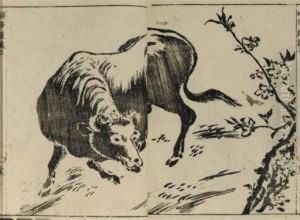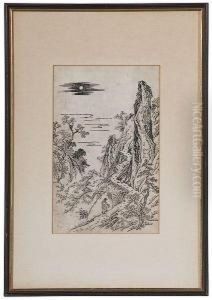Tachibana Morikuni Paintings
Tachibana Morikuni was a Japanese artist and book illustrator from the Edo period, recognized for his significant contributions to ukiyo-e, a genre of Japanese woodblock prints and paintings. Born in 1679, Morikuni worked primarily in Osaka and is one of the earliest known artists from this region to produce ukiyo-e style works.
Morikuni's art is characterized by its delicate lines and use of gentle colors. He primarily illustrated books, including instructional manuals on painting and drawing, which were quite popular in his time. These books played an important role in disseminating artistic knowledge and techniques to a wider audience, serving both as educational resources and as entertainment.
One of his most famous works is the three-volume 'Ehon Tsūhōshi' (Picture Book of Selected Treasures), published in 1729. This illustrated book combines images and text and is a valuable resource for understanding the style and content of ukiyo-e during Morikuni's lifetime. Morikuni's influence is evident in the works of later artists, who built upon his techniques and subject matter. Despite the prominence of his works, not much is known about his personal life, and he remains a somewhat enigmatic figure in the history of Japanese art.
Morikuni passed away in 1748, but his legacy endured through his contributions to the ukiyo-e tradition and Japanese art instruction. His works continue to be of interest to art historians and collectors and are part of the rich tapestry of Japan's artistic heritage. They provide insight into the cultural and artistic practices of the Edo period and serve as a testament to the enduring popularity of ukiyo-e.

